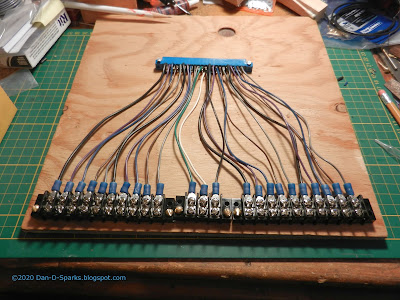Taking photos under the overhead wires by using a mirror.
Cameras are too big to be able to take photos from a scale persons height. So I had the idea of placing a mirror on the layout at a 45 degree angle and aiming the camera down at the mirror that I wanted to try out:You can actually make out the bottom edge of the mirror in this photo. And since the photo was taken in a mirror, I had to flip it in a photo editing app.
It kinda worked! I was able to get a very low POV. Not bad for a quick and dirty test. The photo is a little 'foggy', I suspect that's due to my little mirror being rather old. There is also some ghosting effects going on that is quite prominent on the forward pole of the trolley. This is due to my little mirror being a 'regular' (second surface) mirror.
The mirror set up.
For this photo of my mirror set up, my camera was sitting on the layout. This is the lowest I can get my lens to the ground and still we are about at the roof level of the trolley looking downward. So this mirror technique seems to be viable.
I'm encouraged by these results. So I'll order a new 'first surface' mirror that should be more clear and eliminate ghosting, and continue to experiment.
Yes sir! Continue to experiment!
Dandy



















































